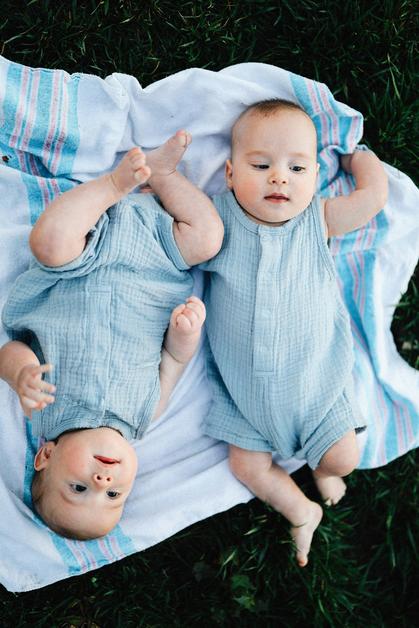For many parents, spotting a growing bump is a moment of joy layered with a flicker of anxiety, especially when the words “big belly twins” enter the conversation. If you’ve been observing your belly expand more rapidly than expected, or received puzzled looks from friends and relatives, questions are bound to spring up. Is my twin belly too big? Should I worry about sudden discomfort? What is normal, and when should I seek help? The journey with big belly twins is filled with surprises—sometimes fascinating, sometimes overwhelming—but always extraordinary. Let us unfold the realities behind that prominent twin bump: from physical changes and medical check-ups to nutrition, comfort, and the emotional ups and downs that can come with a body stretching well beyond the ordinary.
Big belly twins: understanding the experience
What does “big belly twins” actually mean?
The phrase big belly twins describes the notably larger abdominal profile of someone carrying twins—an effect caused by a uterus under double demand. Imagine the uterus, usually the size of a small pear, now stretching ambitiously to house two developing babies. This swift and significant expansion involves not just extra space for each fetus; it encompasses changes in maternal blood volume, increased amniotic fluid, and substantial hormonal shifts. Yet, not all twin bellies are the same. Body shape, previous pregnancies (if any), genetics, position of the twins, and even the configuration of placentas each add their own brush stroke to the silhouette. Are you visualizing your own journey? Each mother’s “big belly twins” experience creates a unique story.
Why does a “big belly twins” pregnancy require special attention?
Carrying twins is not just about fitting two hearts beneath one ribcage. The increased belly size signals rewarding but challenging realities: higher energy needs, earlier and more frequent appointments, and a surge in daily physical strain. The visible bump, often noticed in the early second trimester, can contribute to fatigue, ligament discomfort, and shifts in posture. Parents might find themselves seeking support sooner than expected—whether from extended family, seasoned twin parents’ groups, or online communities (ever wondered how others navigate these changes?). Specialised prenatal care will become a familiar term, as checks for growth, fundal height, and well-being are stepped up in frequency and detail.
The daily life with big belly twins: not just a physical experience
For many, the twin bump is a symbol of amazement, at once a beacon of life and a source of discomfort. The emotions dance: pride, thrill, sometimes a flash of worry. Showcasing a burgeoning belly as early as four months is not uncommon, and the shape changes can outpace expectations. Sometimes your body seems to shift overnight. Tiny flutters might be felt earlier, and carrying twins can mean experiencing both the highs and the hurdles much sooner.
How big, how fast: Growth patterns with big belly twins
Belly size with twins vs singleton pregnancy
A twin pregnancy gives a masterclass in rapid expansion: the uterus grows more quickly, making your bump visible long before most singleton pregnancies “show.” By the close of the first trimester, many already spot an undeniable difference, the abdomen curving outward, uncompromising. Interestingly, the average arrival for twins is around 36 weeks (slightly earlier than single babies). Yet, every belly tells its own story—only medical monitoring, especially ultrasound scans, provides insight into baby growth and health.
What influences the size and shape of the big belly twins?
Several factors weave together to create each unique belly profile:
- Number of babies: Unsurprisingly, two need twice the resources.
- Type of twins: Dizygotic (fraternal) twins most commonly have their own sacs and sometimes placentas, giving a wider and more spaced bump. Monozygotic (identical) twins might share, resulting in different pressure points and shapes.
- Amniotic fluid levels: Elevated in many twin pregnancies, affecting belly size and feel.
- Hormonal surges: Higher levels of progesterone and HCG cause enhanced uterine stretching.
- Individual factors: Your own body structure, abdominal wall flexibility, and even number of previous pregnancies play their role, making each mother’s experience of “big belly twins” distinct.
How do genetics or baby placements affect things? For those on the shorter side or with tighter abdominal muscles, a pronounced bump may be visible quicker. Sometimes, babies rest side by side; sometimes, one above the other. The various positions—longitudinal, transverse, or oblique—all modify the external appearance.
Twins inside: types and abdominal impact
The two main types—dizygotic and monozygotic—bring subtle but familiar differences into play. Dizygotic twins, each with their own amniotic sac, generally create a broader, more outwardly focused bump. Monozygotic twins sharing a placenta or sac can yield a more compact yet still pronounced shape. Medical teams will keep an eye on these distinctions, as they may affect both your comfort and the monitoring schedule.
Physical evolution and common symptoms of big belly twins
Rapid belly expansion—body changes ahead
A uterus that stretches minute by minute can cause a sense of tightness and an unmistakable heaviness, the skin sometimes pulling taut and becoming itchy as the days progress. The abdominal wall, adapting at full stretch, can evoke sensations of discomfort or even soreness.
Back pain, swelling, posture shifts
Heavier weight, a moving centre of gravity, and joint strain (particularly at the hips and pelvis) quickly come into play. Many report new or intensified back pain, difficulties with stairs, and disturbance in sleep. Swelling—an effect of increased blood volume and retained fluids—affects ankles, feet, and hands. Here, simple strategies—elevating legs, using compression stockings, minimizing time on your feet—can offer relief.
Skin, stretch marks, and those unexpected itches
As skin stretches with big belly twins, stretch marks are typical, varying in their appearance and intensity. Dryness, itching, and tingling—often worst over the belly, thighs, or breasts—are not only common but expected outcomes of such rapid expansion. Moisturizers rich in natural oils and regular gentle massage might reduce discomfort, even if they won’t always prevent marks.
Digestion, fatigue, and movement limitations
Twin pregnancies are known for amplifying digestive symptoms—heartburn, constipation, nausea. Hormonal changes, plus pressure on the digestive organs, mean even small meals can feel like feasts. Regular, fiber-rich, and hydrating snacks help stave off constipation. Meanwhile, fatigue, due to raised energy needs, becomes a constant companion—sometimes mild, sometimes all-consuming.
Nutrition, digestive comfort, and weight in twin pregnancies
Fueling two: eating for big belly twins
Did you know that mothers with twins need around 600 extra calories daily? Building blocks like high-quality proteins (eggs, lentils, lean meats), iron (think spinach or poultry), vitamin D, minerals, and omega-3 fatty acids all support fetal growth, especially for the developing brain. Doctors often suggest iron, vitamin, and sometimes iodine supplements. Your appetite becomes a guide, but balance and variety offer the best results.
Calm your digestion, nurture your gut
To ease bloating, heartburn, and constipation, think small but frequent—smaller meals spaced across the day, rich in dietary fiber and fluids. Bland snacks when nausea is overwhelming, and a focus on hydration, can go a long way.
What about healthy weight gain?
With twins, typical weight gain recommendations run between 15 and 24 kg (33-53 lbs), somewhat above singleton pregnancies. Your healthcare professional will track progress, adjusting goals to your specific symptoms—sometimes, fatigue or digestive distress complicates eating, making regular checkups especially valuable.
Medical follow-up: monitoring milestones with big belly twins
Why so many appointments?
Monitoring a twin pregnancy is a team sport. Enhanced medical surveillance—think twice as many appointments, ultrasounds at regular intervals (sometimes every fortnight from the second trimester onwards), blood tests—is the norm. Topics like gestational diabetes, anemia, and preeclampsia (a potentially risky blood pressure issue) become familiar. Frequent checks cover:
- Cervical length (to anticipate any signs of preterm birth)
- Amniotic fluid volume
- Baby growth comparisons (careful to prevent scenarios like intrauterine growth restriction or twin-to-twin transfusion syndrome for identical twins sharing a placenta)
Warning signs and urgent calls
Providers watch for trends—sudden belly growth, sharp pain, consistent contractions, or pronounced swelling. If these appear, especially in tandem, seek immediate advice. Not everything is an emergency, but prompt consultation prevents most serious complications.
The special risks—what do you watch for?
Twin pregnancies have specific risks: preterm labour, transfusion issues when twins share a placenta, and higher odds of preeclampsia. Warning symptoms include frequent, strong contractions, significant or unusual pain, sudden shifts in baby movement, persistent headaches, or swelling and vision changes. Reading these signals early helps keep both babies—and you—safe.
Sleep and comfort: the tactical toolkit for big belly twins
Night-time challenges, real solutions
Finding ease at night can become an odyssey as pregnancy advances with twins. Lying on your back or stomach quickly feels unworkable—side-sleeping (preferably left) improves blood flow and minimizes swelling. Many parents reach for pregnancy pillows to support knees, belly, or back, creating little cocoons of comfort among the nightly tossing and turning.
Accessories that really help
A few thoughtful accessories—maternity support belts to ease strain, compression hosiery to manage swelling, well-chosen shoes—are simple aids with major impact. Adjusting routines, slowing down, and embracing daily leg elevation deliver relief from swelling and fatigue.
Dressing and practical comfort tips
Clothing and foot care: everyday adjustments
Loose, flexible garments (flowy dresses, maternity leggings), soft fabrics, and layers come to the rescue, reducing skin irritation and helping regulate temperature. Supportive footwear takes pressure off sore feet; changing socks for compression stockings supports swollen ankles. Tiny acts like raising your legs or enjoying a gentle foot massage make daily life more comfortable.
Emotional and social impacts of big belly twins
Self-image and confidence: seeing your body differently
The prominent big belly twins can spark contrasting emotions—pride, self-doubt, curiosity. Some parents embrace body changes with confidence; others feel unsettled by new curves. Practicing self-compassion, focusing on the body’s capacity, and reaching out to supportive twin communities fosters body positivity. Remember, comments from colleagues or relatives, sometimes unsolicited, may come your way—having calm, prepared responses can shelter your peace of mind.
Building bonds—online or face-to-face
Exchanging thoughts and advice within parent groups (especially for twins) and online forums can transform the experience, providing not just answers but solidarity—after all, only another twin parent truly gets it! Social media and photo diaries let you celebrate and document milestones, reflecting on this unique pregnancy path.
Myths and stereotypes—setting the record straight
Heard that bump size predicts baby size or birth date? Science disagrees. Ample research demonstrates that regular medical check-ups, not the external bump, are the gold standard for predicting baby health and readiness. Comparing bumps? Instead, partner with professionals and trusted sources to support your wellbeing.
Twin milestones in the womb—growth and recovery
Inside the belly—what’s happening when?
By the end of the first trimester, major organs are forming rapidly. As weeks progress, fetal brain development, breathing practice, and maturation of limbs continue. At 20 weeks, babies respond to sounds. By the third trimester, weight gain tapers and organs mature, but space becomes a luxury. Twins typically arrive around 36 weeks, often with slightly lower birth weights than single babies but robust enough for life outside (with monitoring).
After delivery—healing at your pace
A rounded postpartum belly is a common sight as the abdominal muscles gently recover. Diastasis recti—separation of the abdominal wall—may persist, especially after carrying twins. Recovery is gradual, with pelvic floor exercises or rehabilitation offering support. Persistent concerns prompt further medical evaluation, and a gentle, patient approach benefits both body and emotional adjustment.
Stretch marks—can anything help?
With twin pregnancies and a big belly, stretch marks almost seem inevitable. Regular moisturizing may offer comfort but is not a guaranteed prevention. For persistent marks, postpartum aesthetic consultations are one route, but focusing on skin health—hydration, gentle care—remains the foundation.
Building resilience—support and adaptation
Listening to one’s body, allowing for community help, and joining twin parent groups create a softer landing through the highs and lows. Recovery is a marathon, not a sprint—remain patient, accept support, and consult your health team for both emotional and physical challenges.
Comfort and self-care: practical relief for big belly twins
Quick wins: hydration, massage, gentle movement
Stay hydrated. Warm baths (never hot), brief walks, and prenatal yoga—after a green light from your practitioner—improve circulation and ease aches. Prenatal massage, tailored for pregnancy, helps with tension and comfort.
Everyday support
Leaning on a maternity support belt, investing in a pregnancy pillow for sleep, and using compression socks or stockings for swelling can change the daily experience of big belly twins.
Small changes, big relief
Elevate your feet during breaks; switch to supportive shoes; integrate micro-rests through the day. If possible, delegate strenuous chores—partners, friends, or family can step in. Creating a supportive and positive daily environment makes every difference.
Big belly twins in the media and sharing your story
Why share your journey?
Online communities and social media provide more than advice—they’re spaces for reassurance and celebration. Whether sharing bump photos or connecting through stories, parents often find comfort in collective experiences.
Everyday memories
Whether you keep a journal, a photo timeline, or just update a close circle, documenting moments of your “big belly twins” pregnancy supports emotional well-being and creates memories to look back on.
Key takeaways
- The big belly twins journey is unique—an interplay of body type, genetics, baby position, and pregnancy history.
- A large belly is expected but isn’t the only indicator of a healthy twin pregnancy; medical checkups and ultrasounds matter more.
- Symptoms like rapid belly expansion, swelling, and discomfort are normal; understanding them helps you prepare.
- Special strategies—hydration, physical support, tailored nutrition, gentle exercise—ease everyday challenges.
- After birth, recovery can take time. Emotional and physical rehabilitation is common—don’t rush or self-judge.
- Leverage support networks, both in-person and online, and trust healthcare professionals for reassurance.
- For more guidance, download the application Heloa and access free personalized advice and health questionnaires for your children.
Questions Parents Ask
Can a bigger belly mean twins or another reason?
A noticeably larger bump can indeed make one wonder about twins, but belly size alone doesn’t give the full story. Factors like individual body frame, number of pregnancies, and position of babies also play a part. Sometimes, even a high volume of amniotic fluid or the way your body carries can lead to a bigger belly. Only an ultrasound scan confirms a twin pregnancy for sure. Comparison with others may bring confusion; trust the medical tests for the true picture.
When does a twin pregnancy bump usually start to show?
Twin pregnancies often make their presence obvious earlier—many see a prominent bump by the end of the first trimester. It’s the uterine expansion happening at a faster pace, sometimes influenced by your body type, previous pregnancies, or extra fluid. If your twin belly appears sooner, know it’s a common story for big belly twins.
Is a larger belly during a twin pregnancy normal if I have a smaller body frame?
Certainly. Those with a petite or smaller body may notice their bump becoming visible much earlier and appearing larger. With less room to expand, even minimal growth shows quickly. Your body is adjusting efficiently to nurture two babies; increased physical sensations are typical, and medical advice can help keep you supported and reassured throughout the changes.









